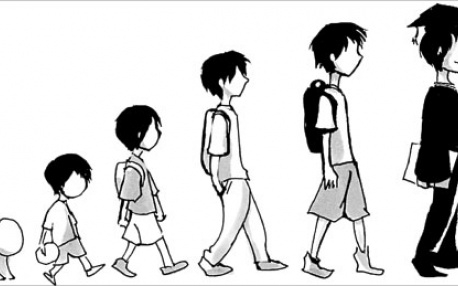
OR
More from Author
At least 1.94 percent of total population of Nepal has some kind of disability. Persons with disabilities, living in remote rural areas, experience a number of challenges, including illiteracy, poverty and malnutrition. These challenges seem insurmountable for the disabled.
Unfortunately, government interventions have also failed to combat these challenges which are the outcome of social and economic exclusion. The truth is, not much has been done for persons with disabilities in Nepal. Most government interventions reflect a medical approach to disability, shaped by negative cultural attitudes, limited understanding of disability rights, and lack of appreciation of potential of persons with disabilities.
Disability is still attributed to past wrongdoing, by parents or by persons with disability themselves, in parts of the country. In remote regions, people with disabilities, especially those with intellectual disability, are barred from religious and cultural events like wedding ceremonies and other formal occasions, as their presence is thought to bring bad omen.
Many still do not think of rights of persons with disability as fundamental human rights.
This reflects in lack of awareness among people regarding the Convention on the Rights of Persons with Disabilities (CRPD); most people don’t even know it exists. The disabled are often subjected to inhuman treatment and are perceived as objects requiring charity, and with seemingly no rights. Resource allocation for disability is inadequate and government plans and programs are not fully disability inclusive.
Disability movement in Nepal is not guided by human rights principles. The rights activists themselves are divided along different political lines. As a result, disability rights movement has failed to get the desired results, especially for persons with disability in rural areas.
There is clear need for community support and services for the disabled. Research shows that most families of persons with disabilities don’t plan for better future of their disabled sons and daughters. The notion of freedom and independence for persons with disabilities during their adulthood is either flawed or non-existent.
In recent times, however, there have been some positive signs. For example, there is now a right to free primary education, which is currently being implemented in favor of children with disabilities. But there is a need for legal and social support systems to enable greater participation and inclusion of persons with disabilities in the community.
Continuous advocacy for disability rights is vital for further development of these systems, for disability rights have direct bearing on the government’s development policies and programs.
Nepal has ratified several international treaties and conventions on disability rights. But their implementation is dismal. There is limited presence of persons with disabilities or their advocates at policy making level. As a result, it is difficult to engage policymakers to address the problem of exclusion of persons with disabilities. Besides, many policymakers themselves harbor stereotypes about persons with disabilities.
Nepal’s ratification of CRPD in 2010 did not bring any significant change in the lives of the disabled. Nepal had not properly assessed the laws, policies and obligations set forth by the convention before signing it. Policymakers in Nepal therefore need to develop comprehensive understanding on Acts, laws and policies framed for the disabled.
Our education policymakers are not fully aware of the need to support inclusive education.
As a result the government has been unable to ensure access to appropriate and quality education for children with all types of disabilities. Rate of illiteracy among persons with disabilities is high, further entrenching their social exclusion, unemployment and poverty.
The situation is even worse for persons with disabilities living in remote mountainous areas where even ‘normal’ folks have no easy access to public services. Social stigma attached with monthly periods compels girls and women with disability to skip school. So parents cannot properly educate them, despite their total commitment for quality education for their disabled children. Girls with disabilities experience double marginalization—first as girls and then as disabled. So what should be done?
We should integrate a human rights-based approach to disability in all aspects of life based on core principles of equality—accountable and inclusive system for all persons without any discrimination. Nepal’s development plans and policies should be framed in line with the objectives set in Sustainable Development Goals and Convention on the Rights of Persons with Disabilities (CRPD).
We should also look to harmonize the works of different coalitions or federations of persons with disabilities to mainstream disability at all levels of development and to fill the gap between existing legislation and implementation of international human rights conventions.
We need to create synergies between various stakeholders already involved in this field and concerned ministries to address longstanding barriers faced by persons with disabilities. Plus, in consultation with persons with disabilities, disability rights practitioners, government and other stakeholders should look to bring national legislation in line with CRPD. These efforts will not completely remove all the problems of those living with disabilities. But they would be a good start.
The author is disability rights lawyer
dev_datta08@yahoo.com
You May Like This

Mastermind behind planting ambush in Udayapur arrested
UDAYAPUR, Nov 30: The District Police Office, Udayapur has today arrested the mastermind behind the ambushing of the vehicle carrying... Read More...

Clinton, Obama pledge unity behind Trump presidency
“Up the Establishment!” That was the message voters sent when they elected Donald Trump to be the next president of... Read More...

Leave no child behind
We should always ask whether any legal, policy or program choice will benefit all children regardless of who they are... Read More...





Just In
- Nepalgunj ICP handed over to Nepal, to come into operation from May 8
- Nepal to gift two elephants to Qatar during Emir's state visit
- NUP Chair Shrestha: Resham Chaudhary, convicted in Tikapur murder case, ineligible for party membership
- Dr Ram Kantha Makaju Shrestha: A visionary leader transforming healthcare in Nepal
- Let us present practical projects, not 'wish list': PM Dahal
- President Paudel requests Emir of Qatar to initiate release of Bipin Joshi
- Emir of Qatar and President Paudel hold discussions at Sheetal Niwas
- Devi Khadka: The champion of sexual violence victims




_20240423174443.jpg)










Leave A Comment